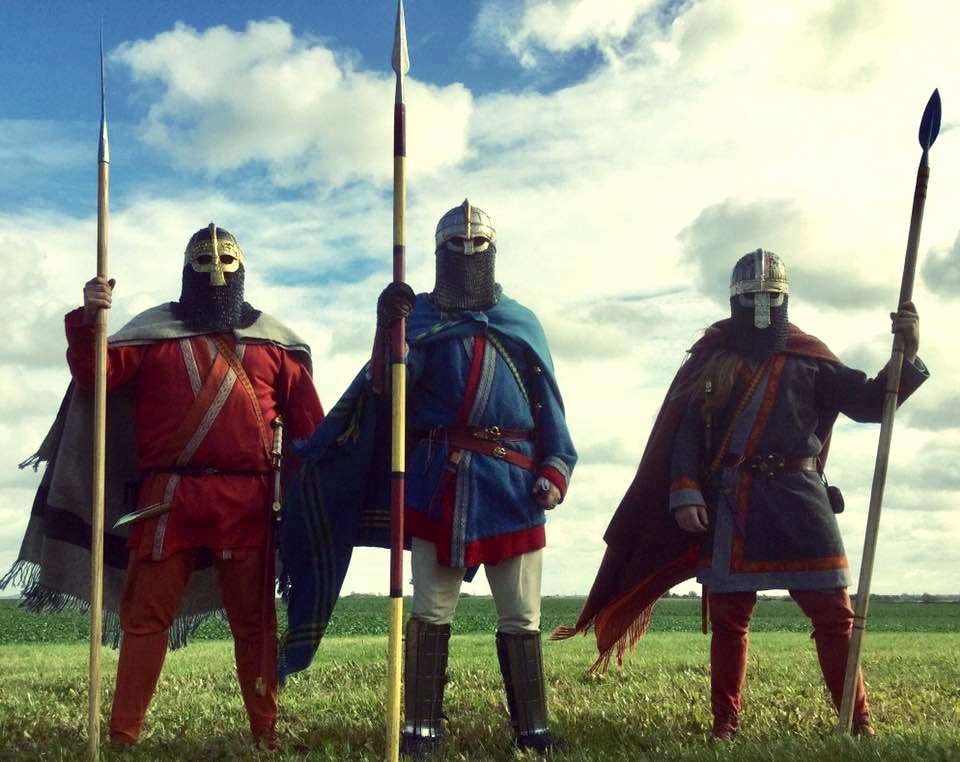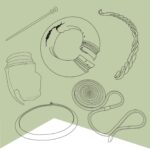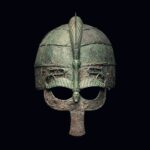What do a teacher, a blacksmith, an electrician, and a biology student have in common?
Their love and interest in history, of course!
Reenactors are often passionate people with a deep interest in a specific period, and Uttaharjar is no different—but they do stand out. To the common eye, they might look like slightly fancier-than-average Vikings in brightly colored clothes, but to those familiar with the Vendel, Valsgärde, or Gotlandic ship burials of Sweden, they will see their subject of interest risen from the dead in all its glory.
Yes, Uttaharjar differs from many other reenactment groups as its members strive to replicate, as accurately as possible, the gear and outfit of specific Vendel Period ship burials.
I recently met with six of their members over Zoom to talk about their passion, how their group differs from others, and what challenges they are facing while recreating the material.
- Tobias
-Grave: Broa, Gotland, Sweden. c. 550-600 A.D. - Jonas
-Vendel 1, Uppland, Sweden, c. 625-675 A.D. - Christian
-Valsgärde 8, Uppland, Sweden, c. 630-640 A.D. - Christofer
-Valsgärde 6, Uppland, Sweden, c. 660-710 A.D. - Thomas
-Ultuna, Uppland, Seden, c. 625 A.D. - Kim
-Valsgärde 5, Uppland, Sweden, 636 A.D. (C-14 dated)
Who are Uttaharjar, what do they do, and how did it start?
It was the Vendel Period that made the members of Uttaharjar fall in love and decide to go the extra mile for reenactment. They do not only dress up in clothes appropriate for the period; they also reconstruct, to every last detail, clothes and gear from the Vendel Period.
The Vendel Period is the lesser-known, and many times forgotten period before the Viking Age. It spanned between 550 A.D to 750 A.D and is characterized by wealth, lavish items in gold and garnets made through the finest craftsmanship, extravagant ship burials, and of course, the famous helmets.
Almost each of the members got their own specific grave they spent vast quantities of time, money, and dedication to recreate. Their goal is to create the items and clothing based on scientific ground with help of archaeologically-proven material.
“You almost start to identify yourself with the grave and the one buried in it,” explains Jonas.
The group started in 2017 as some of the members felt their current reenactment group did not reflect the vision they had of being true to the archaeological material. They also wanted to show themselves to the public during events and be part of public activities to spread information about the Vendel Period. Therefore, they decided to start their own group and Uttaharjar was born. Since then, the group has grown, and they are now nine members and two prospects in Sweden and even Norway. The group is small, but this is due to their high ambitions.
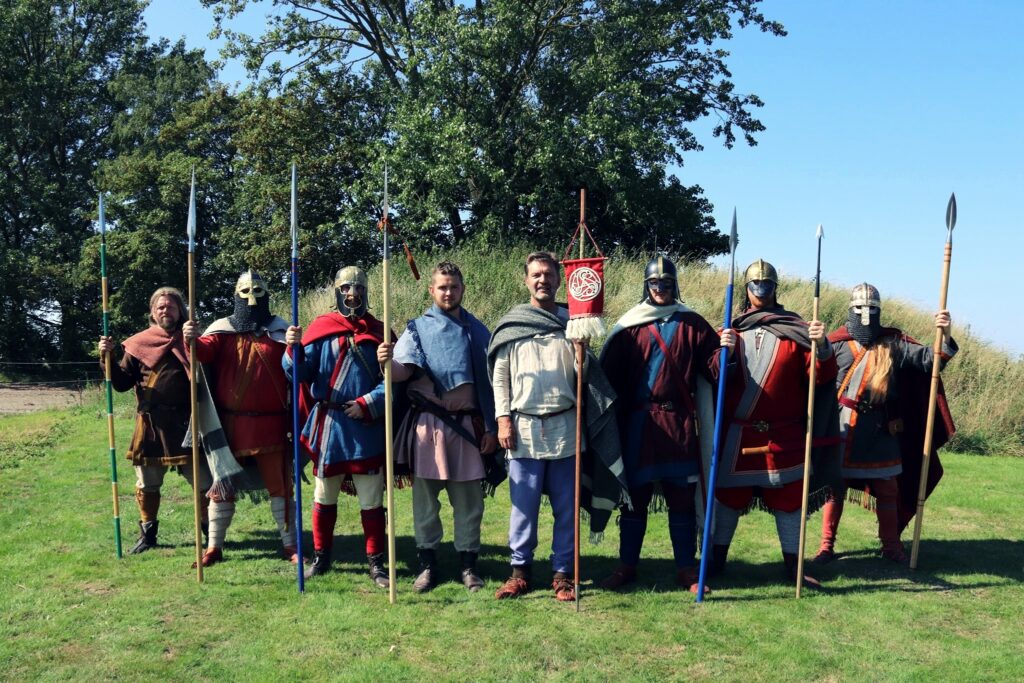
Why ship burials?
Simply because they have more intact materials than other graves. It was custom to burn the dead alongside the grave goods during the Vendel and Viking Age and therefore a lot of the items in graves from this period are destroyed, or partly destroyed because they have been burned. This is not the case with the ship burials though, as they are, contrary to many beliefs, not set on fire, so the material is not destroyed and therefore much more favorable to work with.
How did they choose which grave to do?
To pick a grave is both good and bad, they explain. The downside is there is nothing they can buy that is pre-made, as reenactors who are not specializing in a specific grave can do. Everything needs to be customized and therefore requires specifically made items.
But it is fun, they reassure me, because then they can guarantee the material is good, properly made by skilled craftsmen. And, of course, they can be part of the whole process, including the research.
To ensure everything is as accurate as possible, they visit museums and depositories to look at and study the objects that they are going to recreate, something they very much enjoy!
Are they archaeologists, and what methods do they use to recreate items?
None of them is an archaeologist, but that does not mean they do not know what they are doing.
What they do have is the passion and profound interest for recreating historically accurate objects. And by doing this, they use a lot of the same methods as archaeologists do in experimental archaeology.
Experimental archaeology’s goal is to try replicating and testing the archaeological material in practical ways. It can be to re-create an axe and test what it was used for, as axes have different uses depending on features and looks. Experimental archaeology can also attempt to recreate items in the same way it is thought that the originals were created. By doing this, the craftmanship and skillset possessed by the original maker will shine through to the practitioner that is now trying to recreate the item, letting him or her know the enormous amount of skill and time taken in making the items. It is indeed a beautiful way to learn to appreciate the hours and effort someone has spent, hundreds or thousands of years ago, to master a skill that sometimes can be hard even for masters to imitate today.
“You see things in a different light and understand how they are made when recreating them yourself,” says Christofer.
Jonas adds that he currently is working on the fourth version of an axe while using it to try and figure out what it was used for.
Almost all the members have some craftsmanship skills within different areas which are beneficial for the rest of the group’s members. There is a lot of gear needed to be made and the members help each other out. It is not only clothing and items they borrow from the Vendel Period, but they also use the practice of trade amongst each other to make sure they all have what is needed with help of their respective skillsets.
Each member has something to bring to the table; one practices blacksmithing, one has mastered the skill to sew, one to knit, etc. They even collectively gathered money to let one of the members take a pricey course in how to make historical shoes, and as thanks, he is now making the shoes for the whole group.
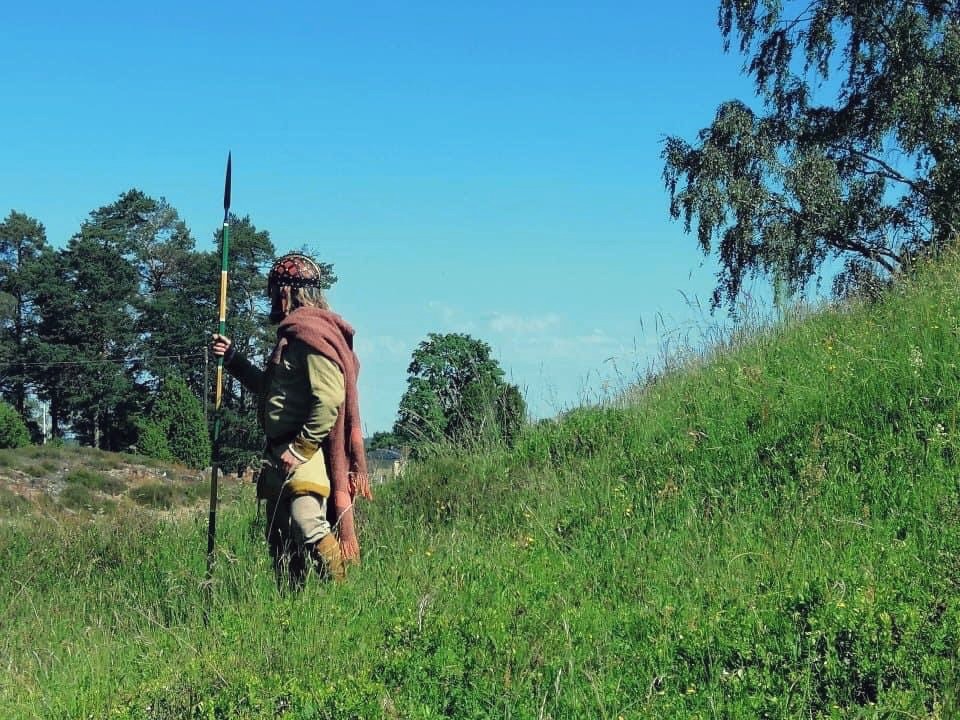
Those who do not have a skillset in craftmanship have other abilities, such as research, networking, or public speaking, which are equally needed for the group to reach its goals.
What they cannot make themselves, they purchase from others who have mastered specific skills. You see, the outfits of individuals that Uttaharjar recreates were no common men. They were the elites of the Vendel Period in central Sweden, fully equipped with the latest fashion and finest weaponry and accessories, covered in gold and garnets, made by the most skilled blacksmiths. And of course, not to be forgotten, this includes the characteristic helmets.
The Vendel Period aristocracy did not dress cheaply, and if you think it was only back then that one had to pay good money to look as splendid as they did, think again!
To recreate a full outfit today costs a small fortune, which even pumps up the idea of how exclusive they must have been back in the Vendel Period itself.
The group tells me that a full kit—clothes, accessories, and weaponry, including helmets—costs between 100,000-150,000 SEK (9900-14,800 euros, or 1200-1800 USD).
What about the outfits, what do they look like?
The group tells me how hard it can be to understand how exclusive the Vendel Period elite was.
Many of us think that people back in ancient days walked around in a rag with dirt on their face, but that is not true. The archaeological material reveals items covered in gold, as well as fabric of the finest quality.
The member’s outfits are all in bright colors, edged with beautifully-patterned ribbons.
The Vendel Period was indeed a “peacock” time; color and demonstration of wealth and fashion were highly regarded, and no expense was spared.
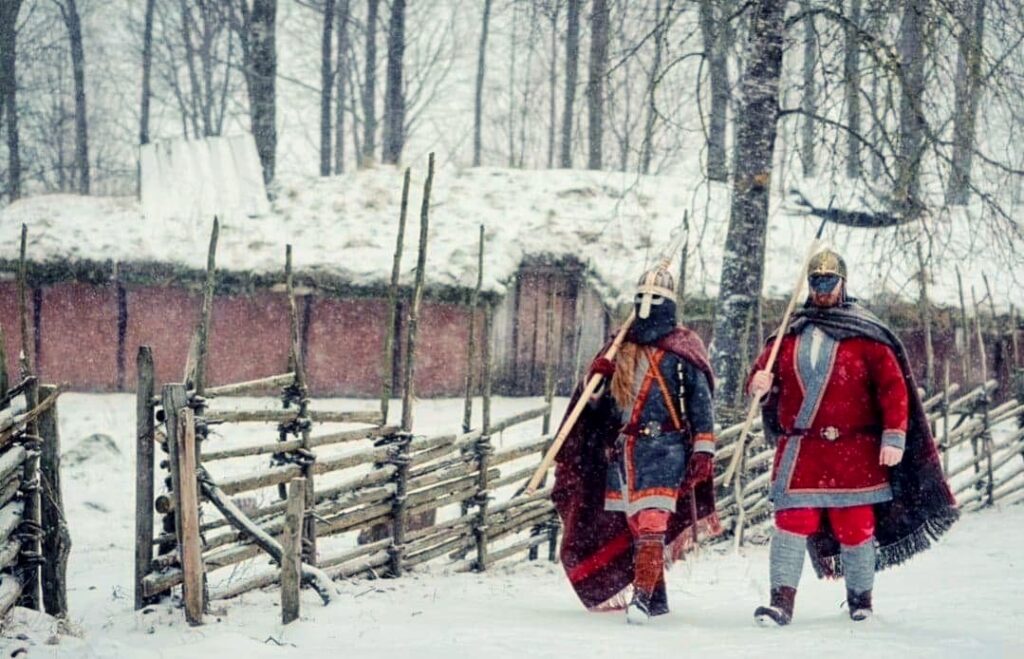
It is a challenge though, to create the clothing, because unlike items of metal, clothing is organic and will decompose, leaving little to nothing left in the graves.
But it is not impossible! There is an abundance of guldgubber: thin, beaten gold pieces with a stamped motif, often depicting a woman and man embracing each other. They are in many cases detailed enough to be used as a template to what people have worn during the Vendel Period and Viking Age.
“We think we are pretty close to what they would have looked like. We try to interpret as close as possible with the material that is at hand,” Jonas says.
They also tell me how many people think it is strange how colorful they are. It is probably the view of the Viking Age depiction through popular media that has made its impact.
They tell me they feel like the Viking Age is hollowed out, and that it is one of the reasons they decided to go for the Vendel Period. Many Viking Age groups mix style and time period as well.
While many groups are recreating the Viking Age in Sweden, only two others are recreating the Vendel Period.
So, what are the perks of being in a group like this?
The group learn and develop from each other, they tell me. They work as a collective and never-failing idea source; we can discuss so many thoughts.
They all have different roles, and they learn from each other’s strengths.
The members are all quite different too, but they come together in their common interest of reenactment and the love they have for the Vendel Period. This has created tight bonds and close friendships between the members.
No one is an expert on everything, but everyone got their specialization. In other words, the members of the group complement each other, and they all have their part to play.
But the big thing, they tell me, is to meet the public and show themselves off and who they are.
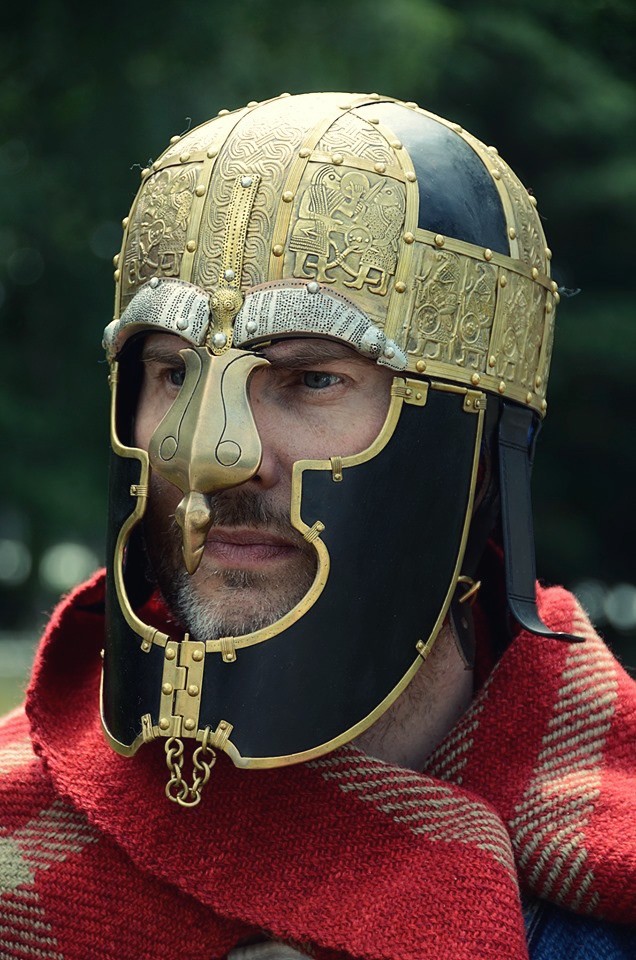
What type of public events does the group do?
Part of why they started the group was because they wanted to show themselves to the public and spread information about the Vendel Period.
They use several forums to do this. Many reenactors like to attend historical camps or markets, which Uttaharjar sometimes does, but the group focuses on events and lectures.
They are well received abroad and have many times been to events in France, England, and Italy.
They are also working towards the scientific parts of their work, and are holding, or helping to hold, lectures both in museums and universities. Museums that they have an extra tight bond with include the Gamla Uppsala Museum and the Uppåkra Museum in Uppsala and Skåne, Sweden, where they host “Vendel Period days” during the summers. Uttaharjar has been holding their own events even before it was an actual event.
They have also been on set with the Swedish TV program Vetenskapens Värld (The World of Science) three times. The last time was to act in the documentary about Sandby Borg, which we have written about here in Scandinavian Archaeology before. The group is appreciated for their work as they will provide both historical accuracy and quality to the series.
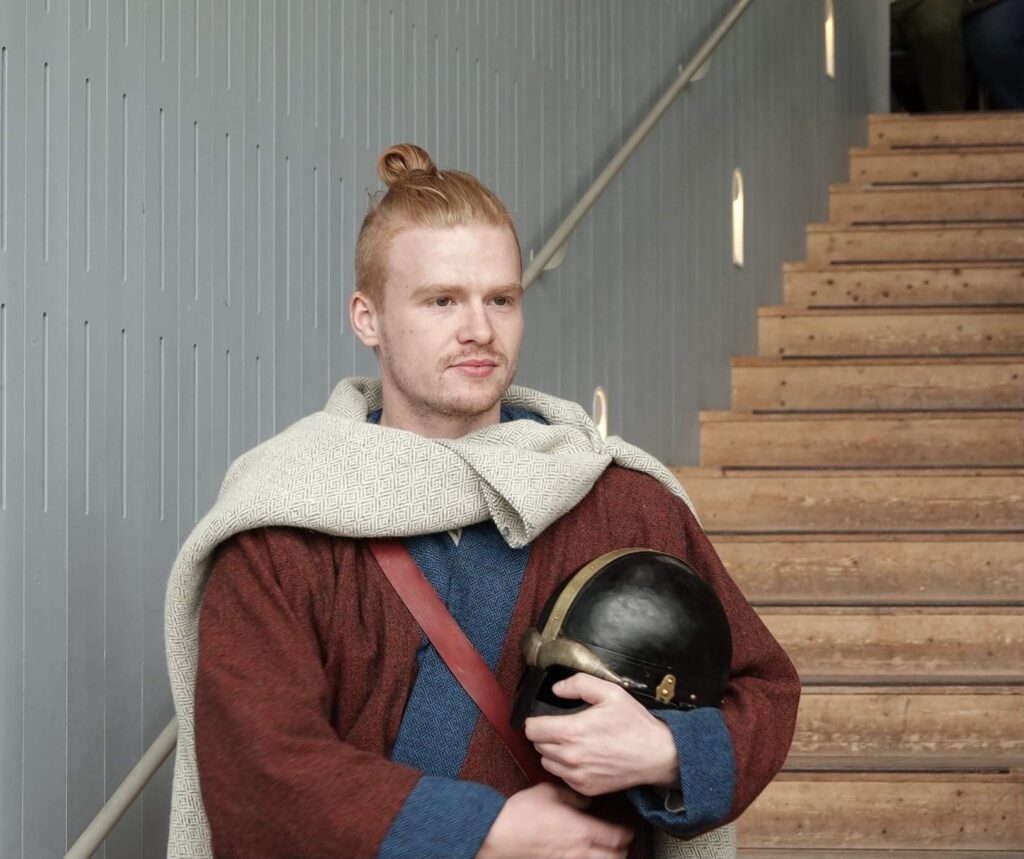
During the interview, the members of the group talked a lot about how important authenticity is, and something that struck me as to how serious they are, was when they told me they use sharp weapons.
They have proper, sharp swords.
“Yes, the symbolic value should not be underestimated,” Christian explained. It is a completely different feeling to hold a real sword. The feeling, as well as the tactile and practical aspects, really add to the authenticity, both for them, as for the public. It helps one understand the seriousness of the weapons. Because they use sharp weapons they do not use them to fight!
What do researchers and archaeologists think of you and your work?
In the beginning, archaeologists and researchers did not get in touch. But with time, researchers started to understand the advantages of the work of reenactors who make their items true to the original with proper research.
Reenactors have, for a long time, not been taken very seriously, as many groups do not feel the need to do things historically accurately. Uttaharjar, on the other hand, puts pride into the research they need to make their gear and clothing. Due to this, the pristine work of Uttaharjar has given them a great reputation and researchers do now contact them from time to time. While working on remaking items, it is not unheard-of for the group to find details that archaeologists or researchers have missed. Some archaeologists are very supportive of their work and just see this as an advantage and help in their research, but this has not always been the case. In the beginning, they had a very hard time contacting both researchers and museums, but they feel like it is opening up and their hard work is proving itself.
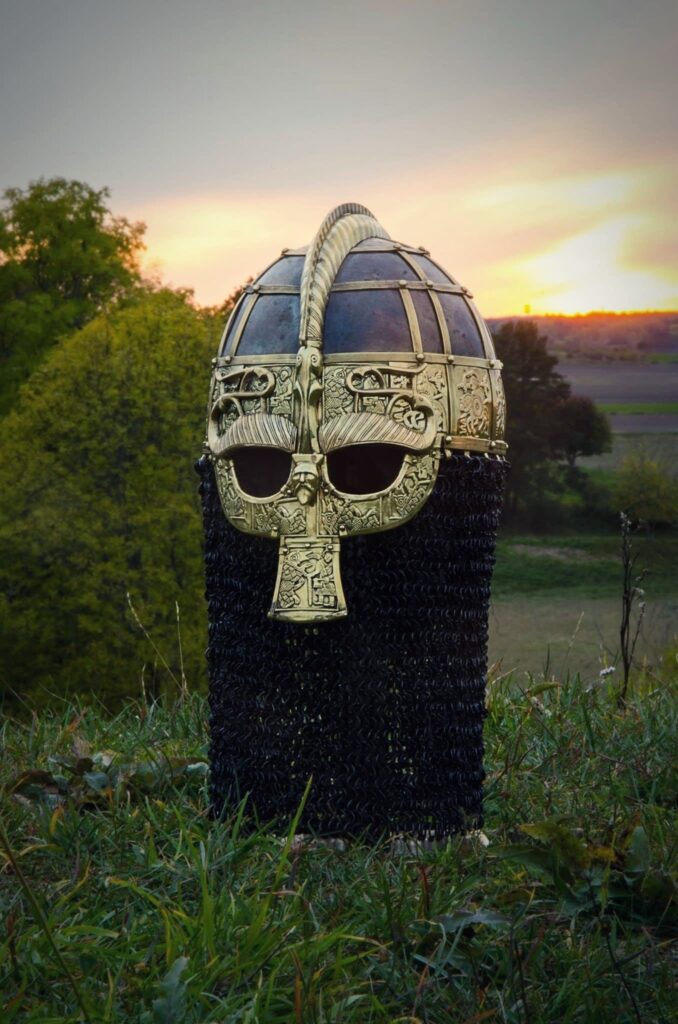
“It is nice to be appreciated, but it is extra nice to be respected,” Christian says.
But recreation and reenactment are not only beneficial for archaeologists and researchers.
Thomas, who works as a blacksmith himself, says replication of items for reenactments can be used to create better and closer cooperation between craftsmen, archaeologists, and historians.
What are your tips for those who what to start with reenactment?
Do it as long as you think it is fun and do it on a level you feel comfortable with. Creating historically accurate clothing might not be for everybody, so make sure you do what makes you happy.
See and read more about Uttaharjar on their social media platforms.
Cover Photo: Tonje Digre. From the left: Jonas (Vendel 1), Christian (Valsgärde 8), Christofer (Valsgärde 6)
Photos: See photo detals. All photos Copyright 2021 Uttaharjar.
Text: Lovisa Sénby Posse 2021. Copyright 2021 Scandinavian Archaeology.
About the author
Iron age Scandinavian archaeologist with a bachelor in Liberal arts with major in Archaeology and a bachelor in Art history with major in Nordic art, both from Uppsala University, Sweden. Exchange studies at Trinity College, Dublin, Ireland, and University of Pretoria, Pretoria, South Africa.
Master of Arts (two years) in Archaeology with specialization in burials, ship burials, and artefact management and interpretation, also from Uppsala university, Sweden.
In my master thesis I created an analyzing method to handle large quantities of artefacts, a method descended in Art History. I also created a method with elements of theory to perform a spatial analysis on graves. This also derived from Art History. The methods were applied to ship burials at Valsgärde, Upland, Sweden.
As Editor-in-chief, I am responsible for the publication and over all work with Scandinavian Archaeology, a job I deeply enjoy. I also founded the magazine in late September 2020.
